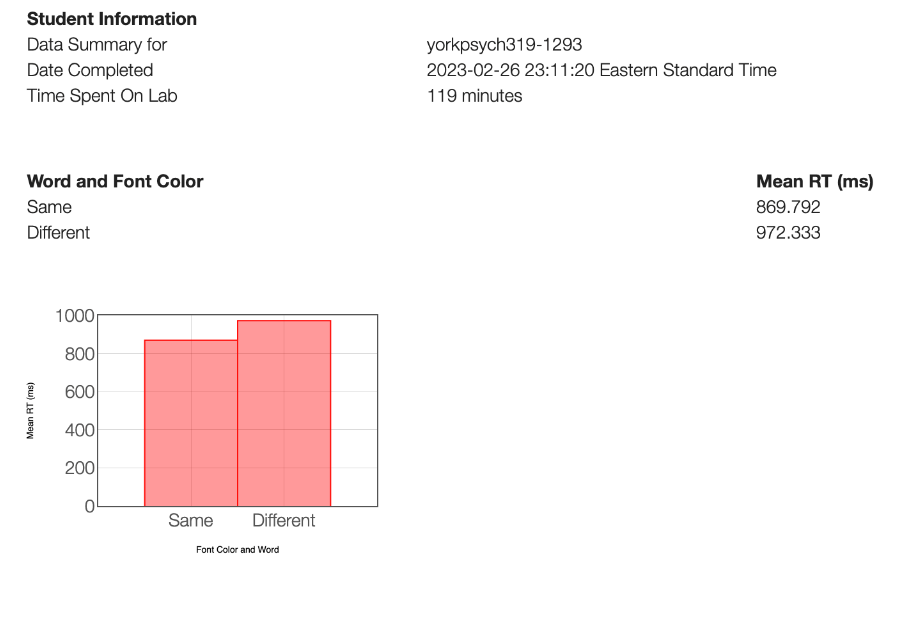Introduction
The Stroop effect is associated with an experiment in which people should not name a word but a color with which it is written. The investigator’s motivation is assessing a research subject’s cognitive flexibility and attention span (Magee, 2021). The author tried to answer how successfully this subject can identify colors by choosing the right one and ignoring distractions using their mind. The experiment addresses questions regarding measuring cognitive abilities and the brain’s work. According to the author’s hypothesis, there is some inhibition during naming the color of words whose meanings do not coincide. Based on the author’s theory, my results will reveal some delay in identifying colors, but my reaction speed will improve in a subsequent experiment.
Methods
Items are a notebook and a pen; stimuli are congruent and incongruent. The experiment involves stimuli such as congruent (colored words are written in ink of the same color as the word) and incongruent (words are written in ink whose color does not match the color of the word). The study is conducted in conditions where it is necessary to name a color, ignoring a word itself. I used a procedure based on the unique time test. The stimuli were presented based on the colors of words shown on the cards, under the condition that I needed to name the colors of words as quickly as possible; the responses were measured concerning reaction rates and numbers of correct answers.
Results
My supposed experimental results have been confirmed, and I perceived text faster than color. The speed with which I read made it much more challenging to determine the color of a written word. It took me 119 minutes to pass the test, and each time my reaction speed improved (Figure 1). However, the number of correct answers gradually increased; I first perceived the color, not the text.

Conclusions
Generally, my experiment confirmed the hypothesis outlined in the introduction. The results showed some delay in determining colors; more often, a person perceives texts first. This experiment applies to real-life situations when it is necessary to correctly choose a color and fonts when composing visual information, for example, in management. Possible errors could be related to the transfer of color based on the screen matrix, the light falling on it, and the noise nearby. A follow-up experiment to solve questions and problems is the Simon Task.
Reference
Magee, D.J. (2021). Orthopedic physical assessment (7th ed.). Elsevier.